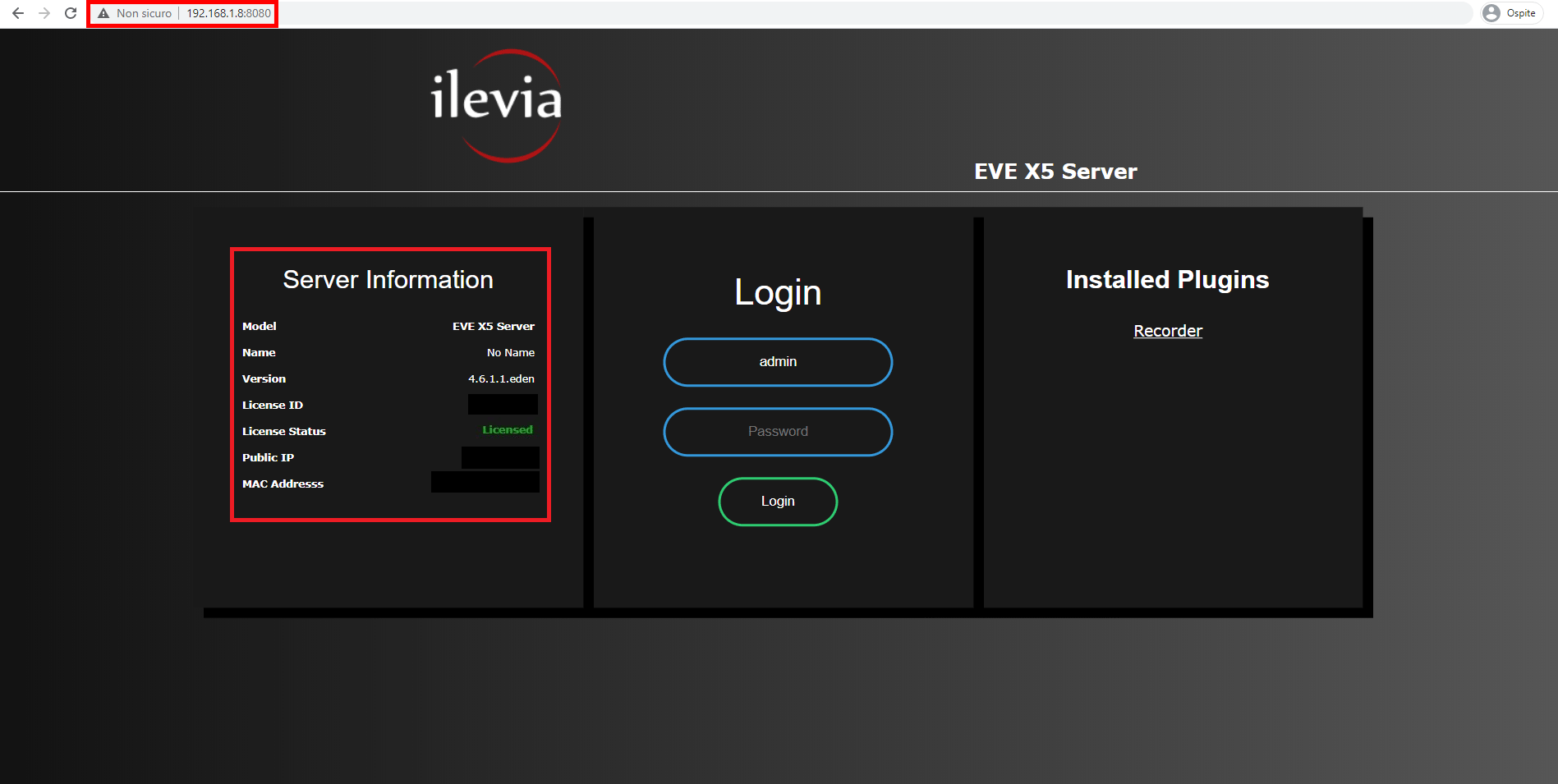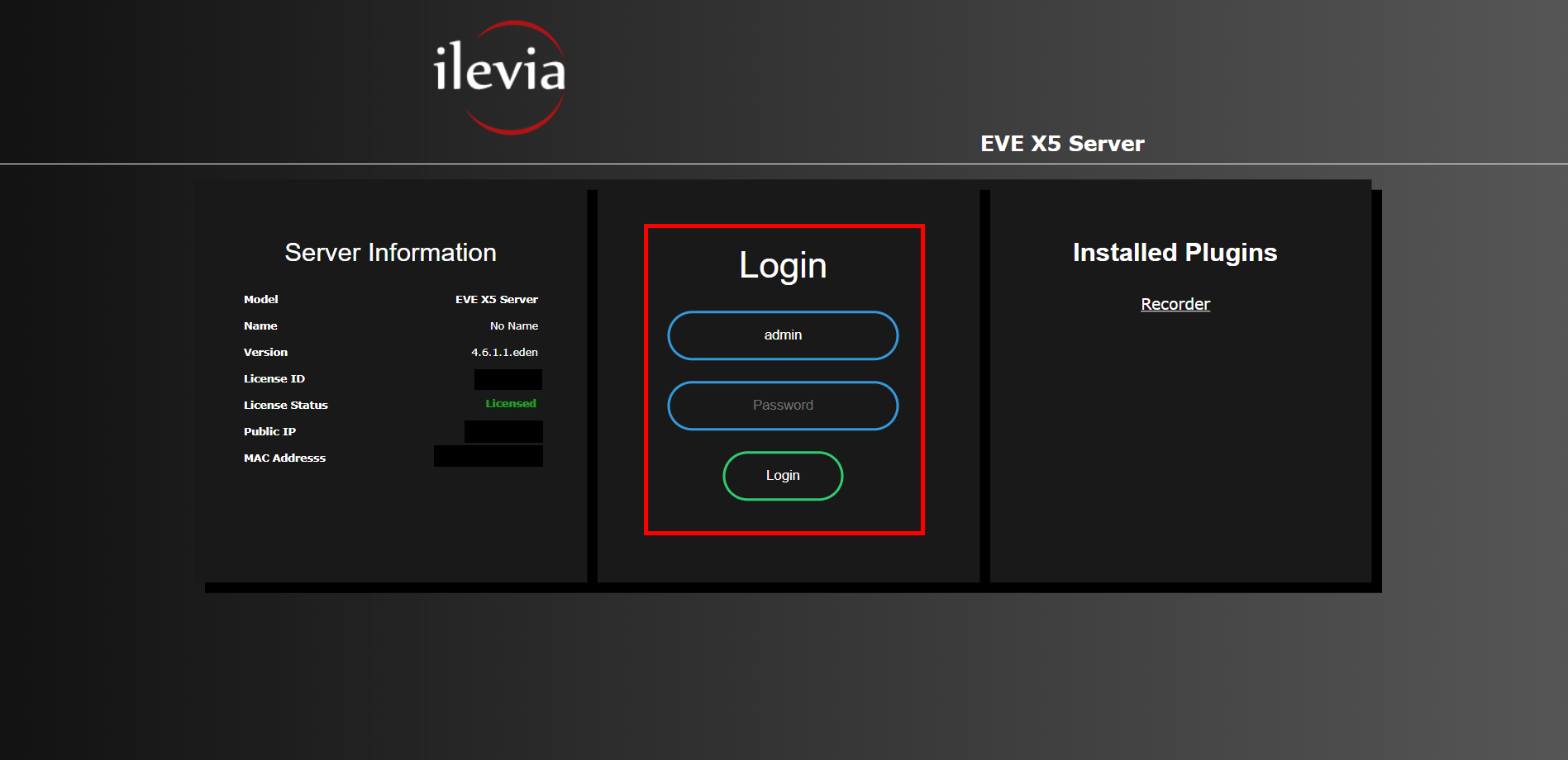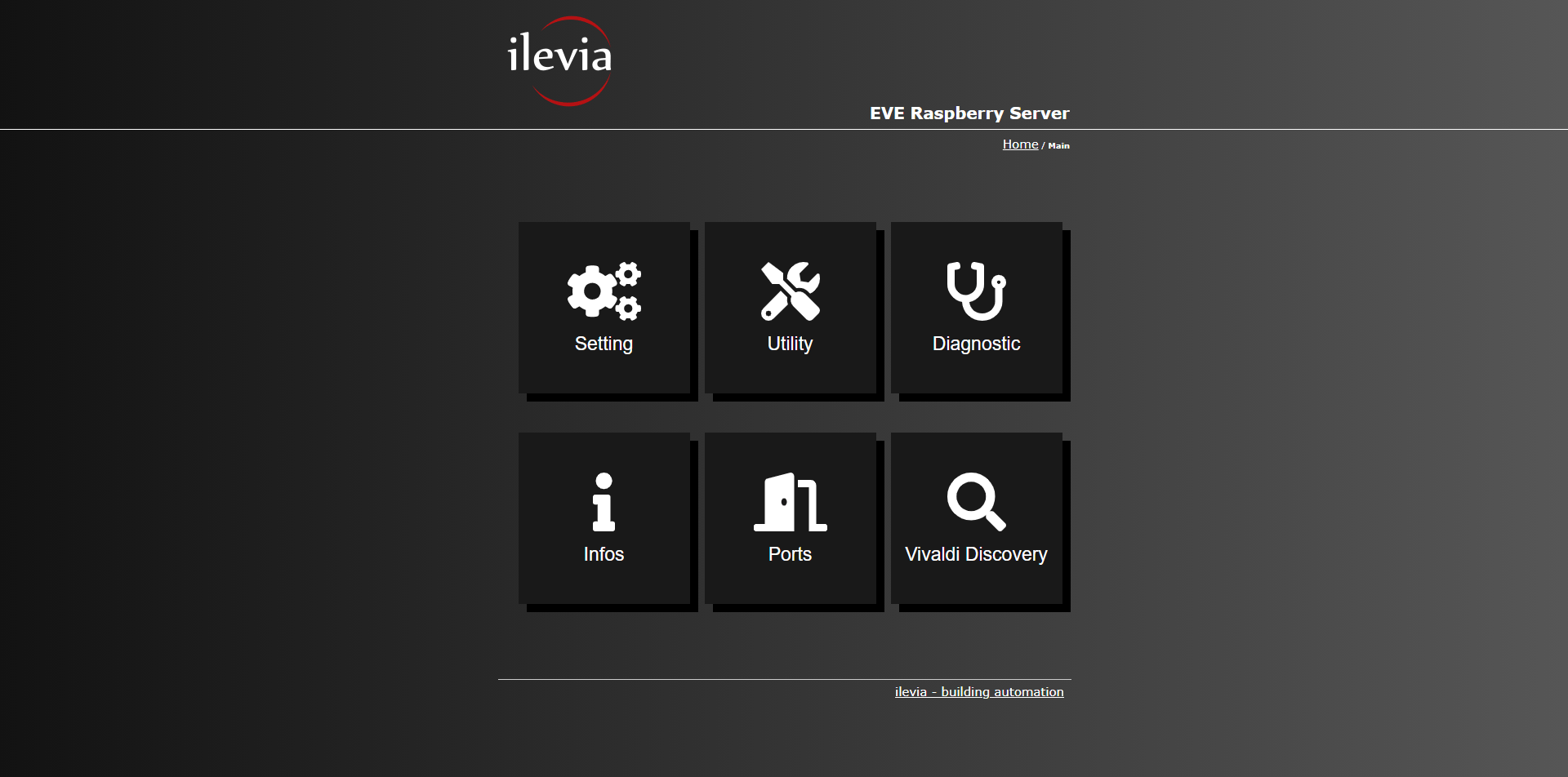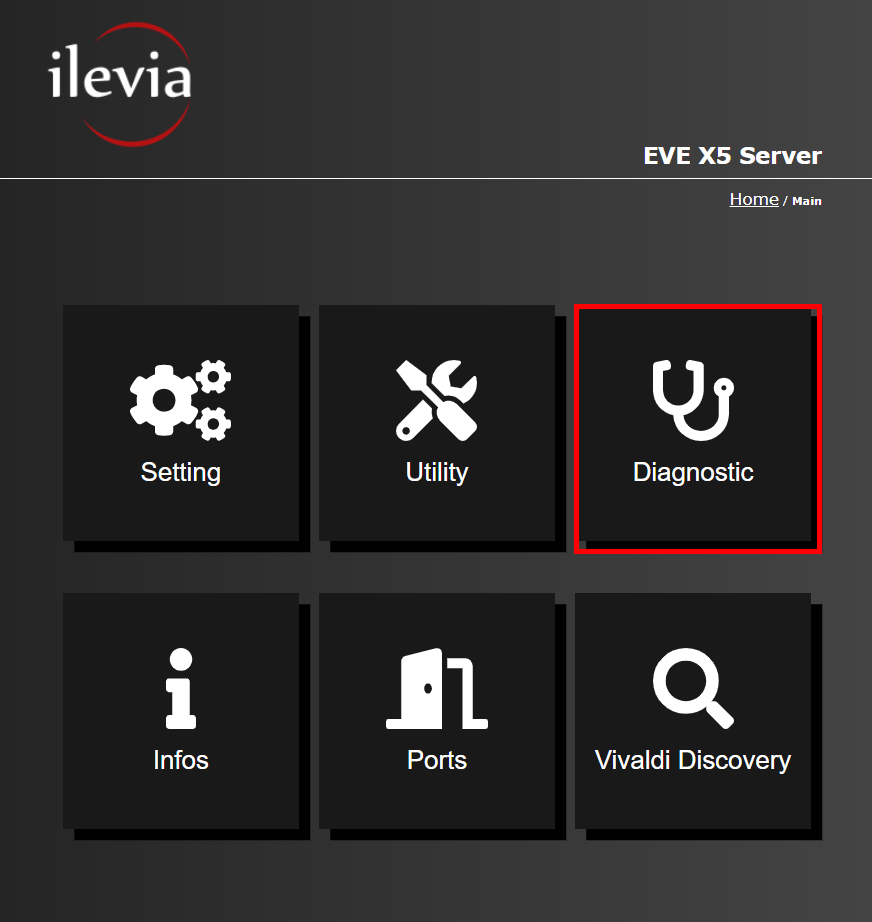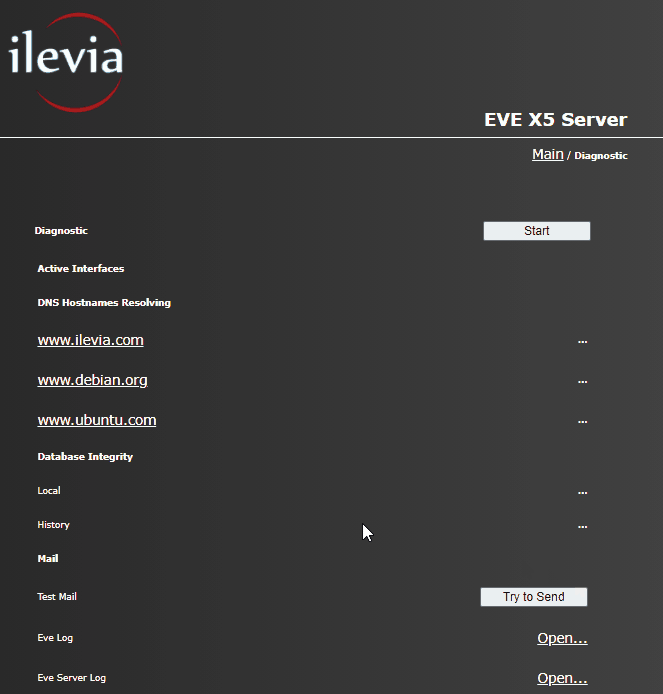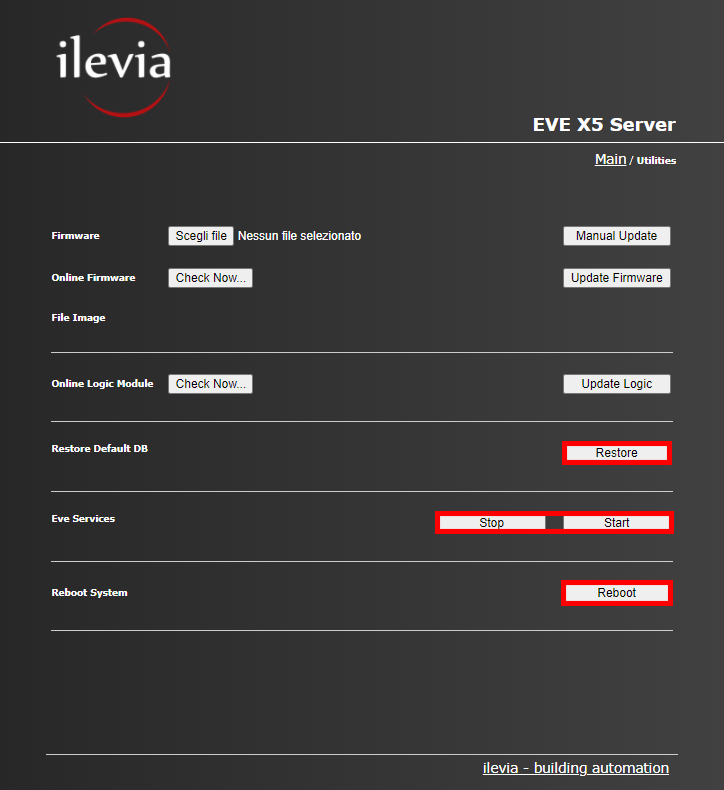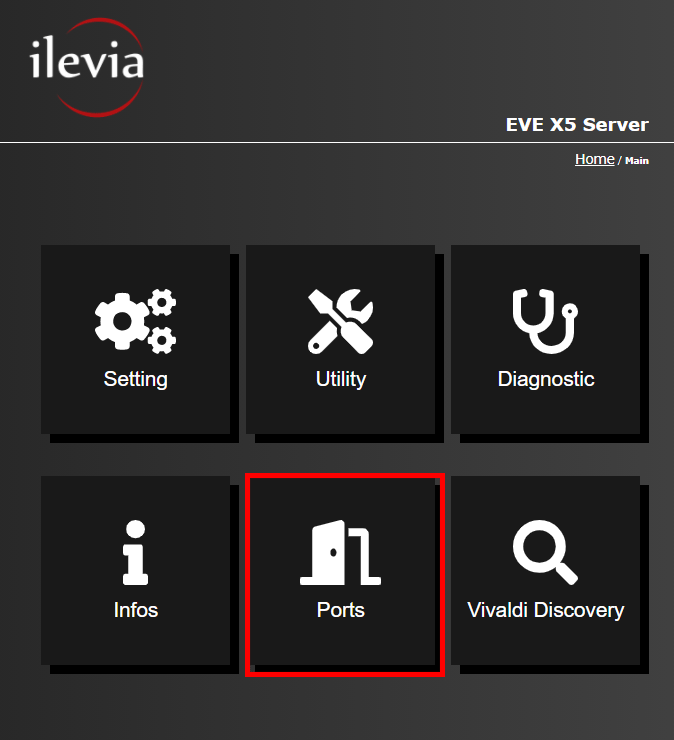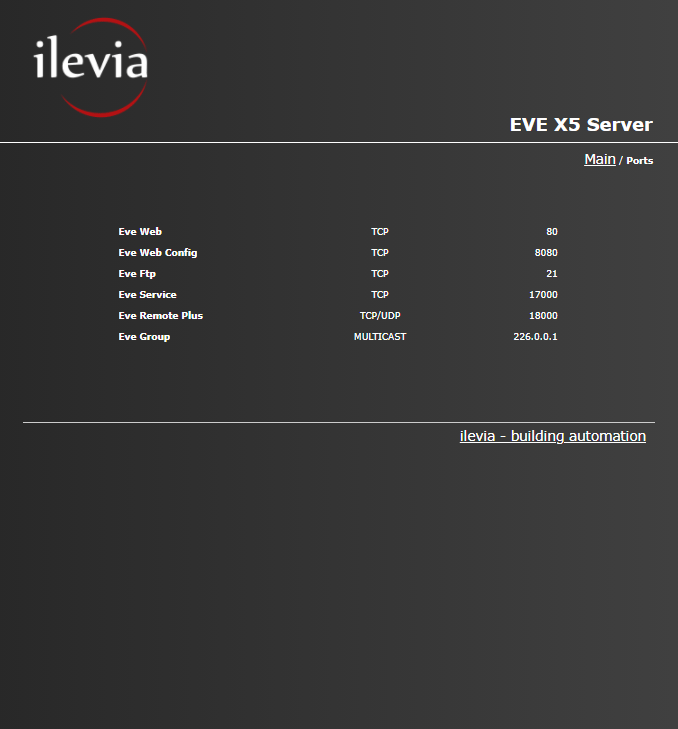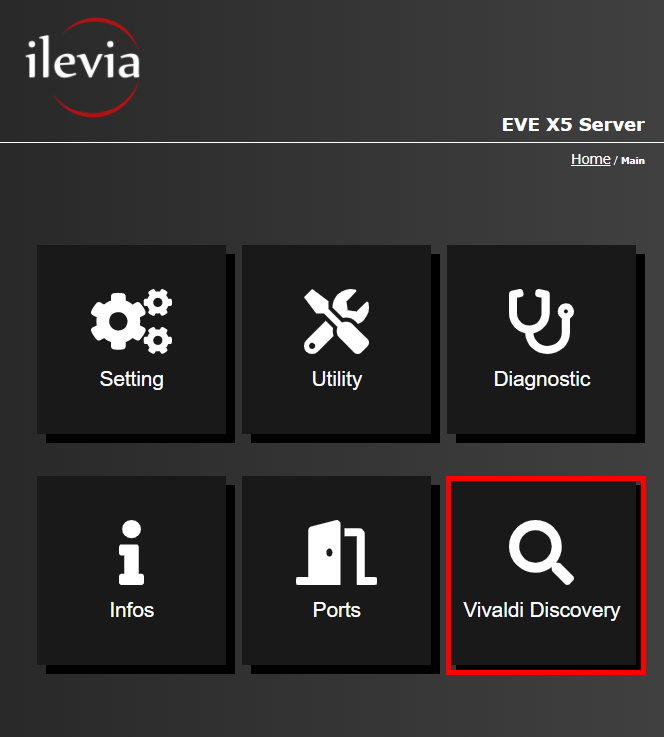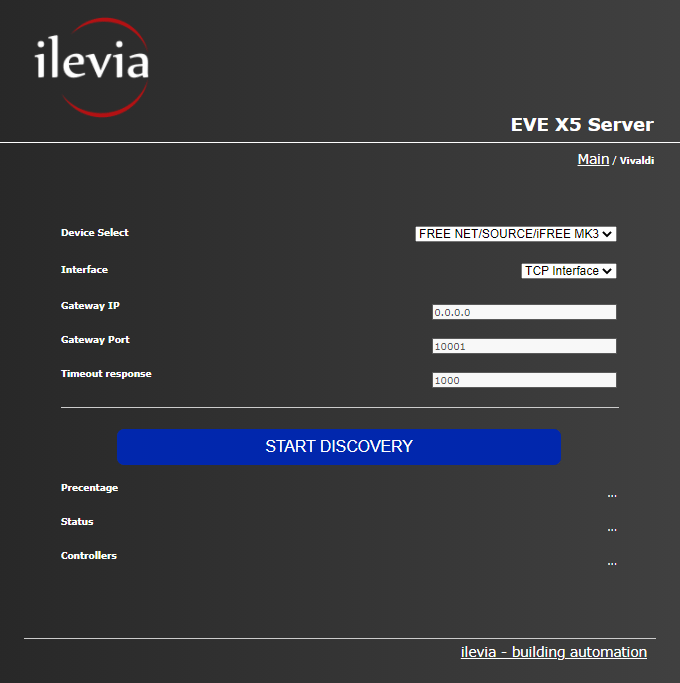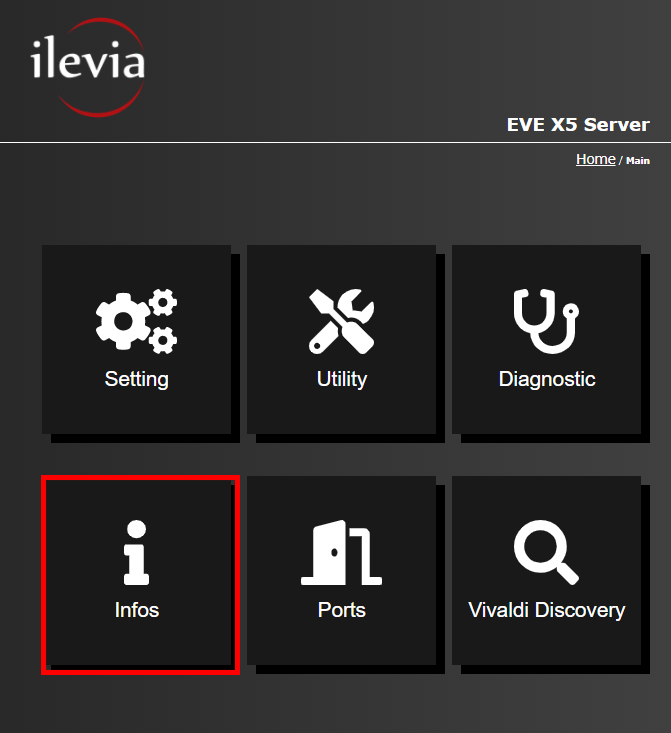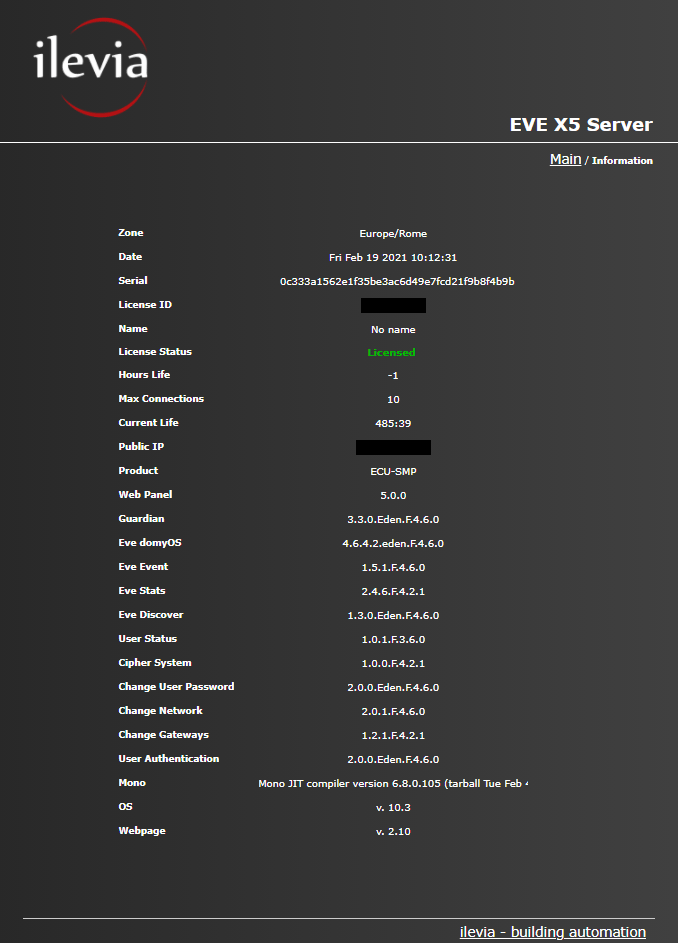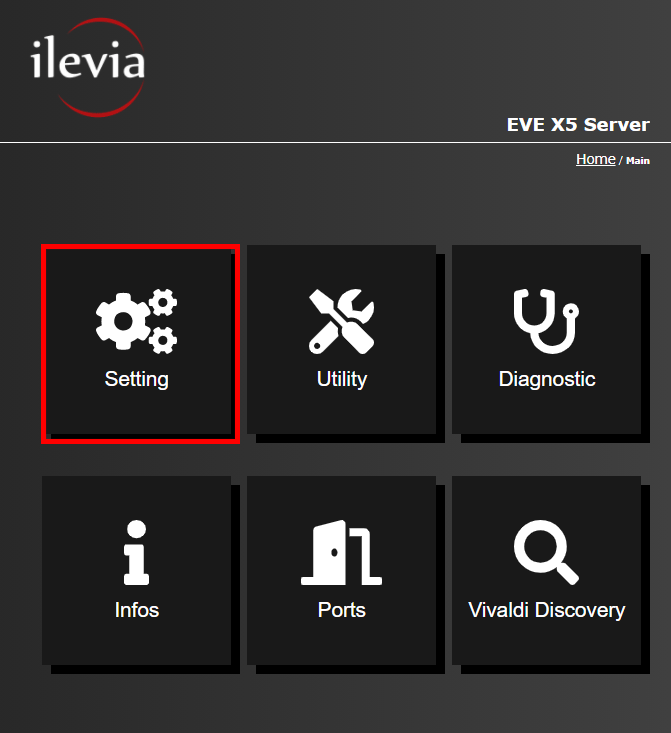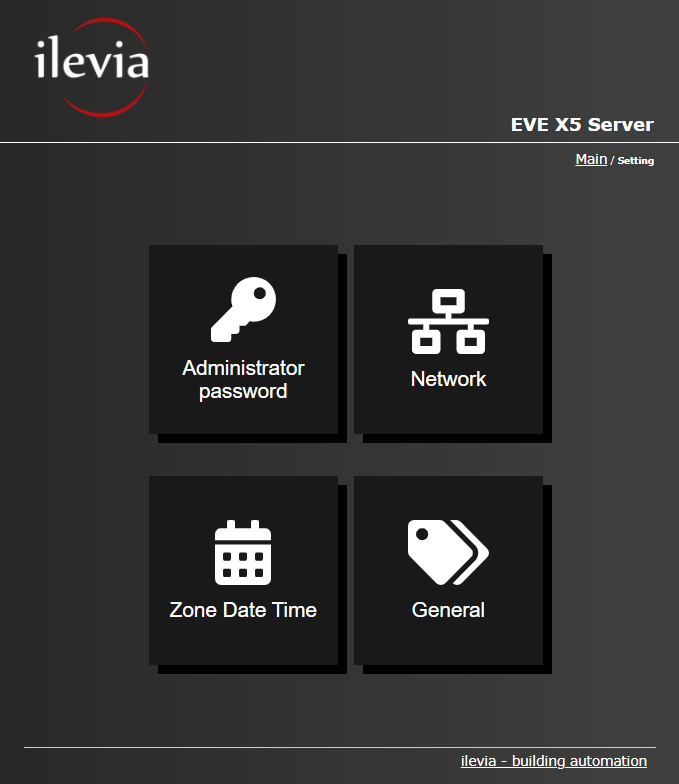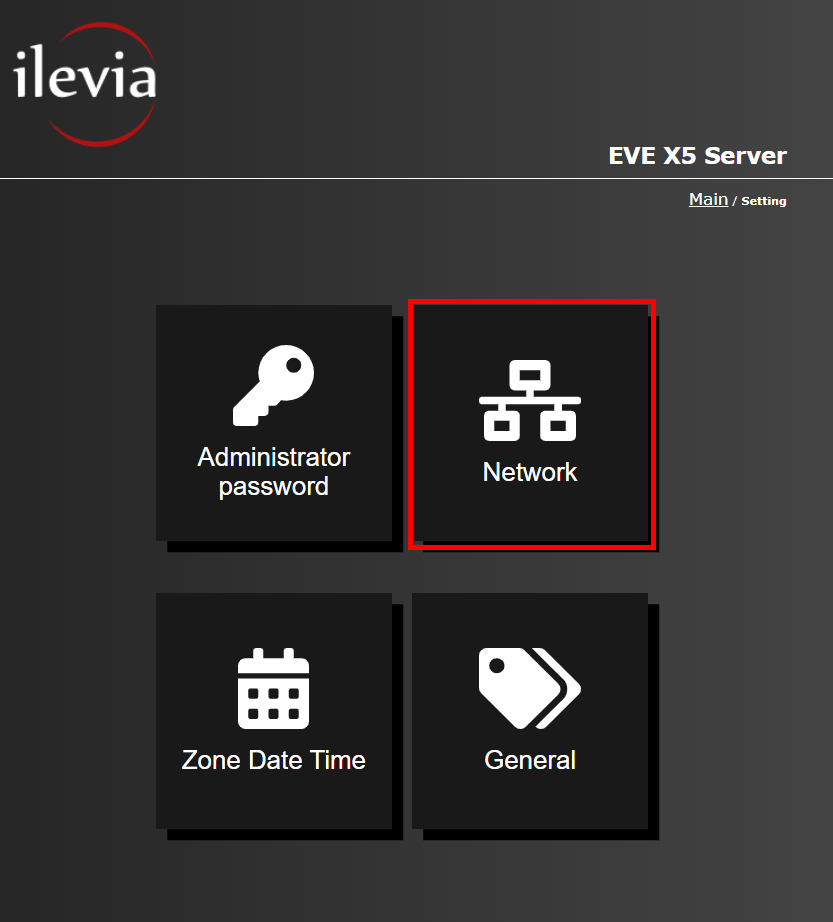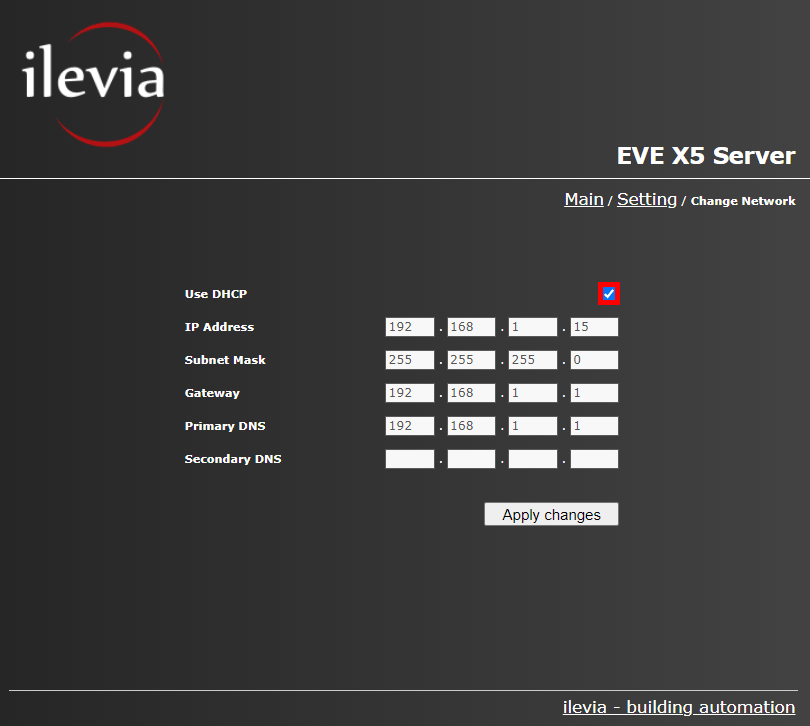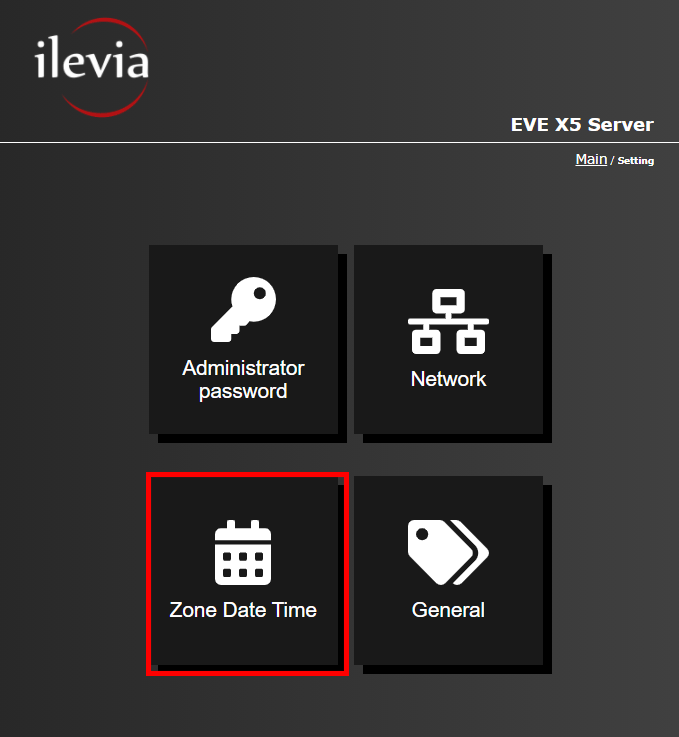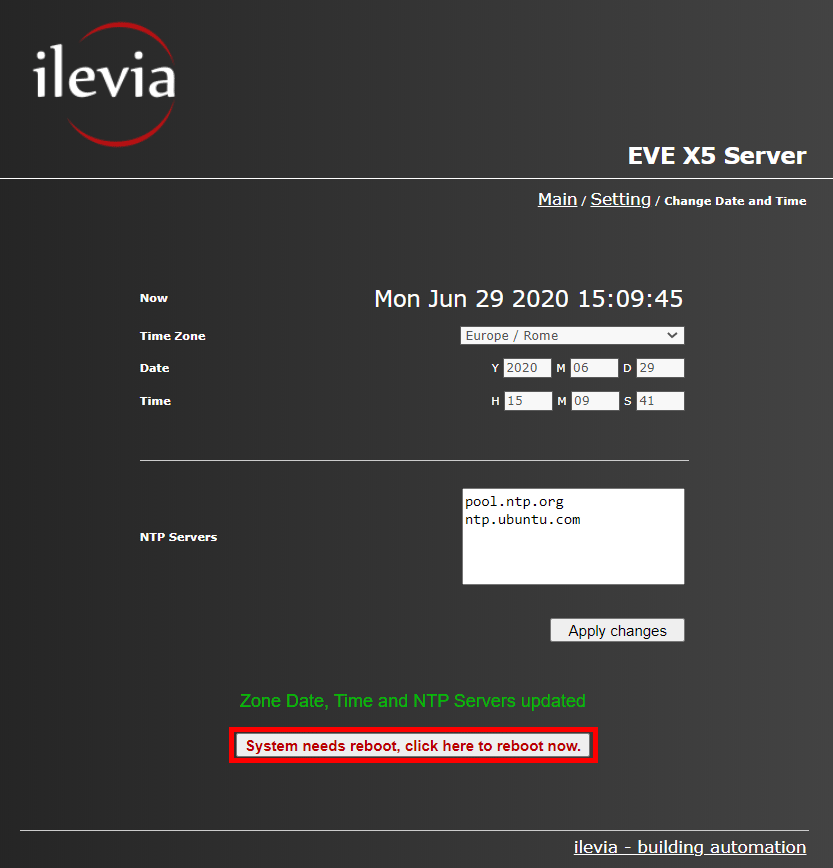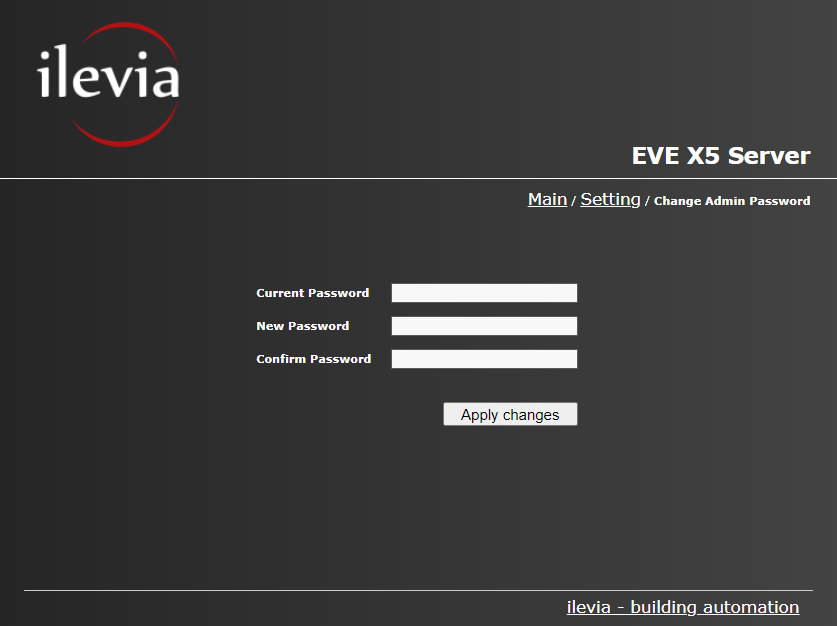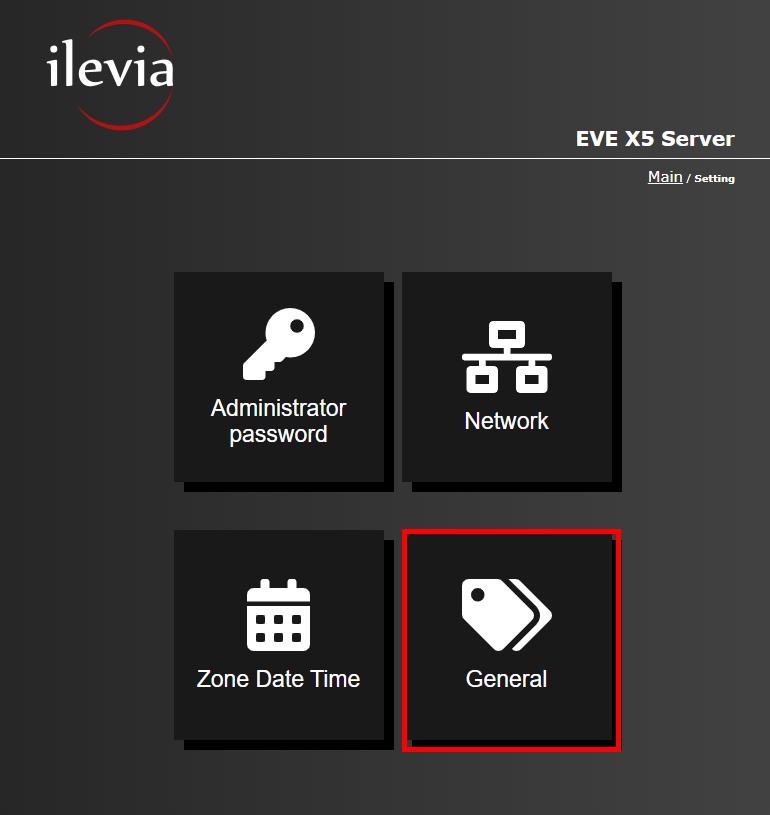VIRTUAL MACHINE WEB CONFIGURATION PANEL
Connection and configuration
Step 1: CONNECTING TO THE MAIN PAGE
Open your web browser and type the IP of your server in the URL bar on top, if you don’t know what’s your server’s IP please click this link to find it out.
troubleshooting:
– If your browser won’t open the server main page, check the virtual machine network setting to check if the virtual machine network adabter is correctly set up.
Step 2: LOGIN
Once connected to the X1 server web page, we can proceed to put the username and the password in it’s own login section.
Note. The default password is “password” however we suggest to edit it once the project will be defined (please refer to “Multiuser management” guide).
Step 3: MAIN MENU
Once succesfully logged in, the web configuration panel menu will be displayed like this, here you can find the access of all the configuration settings e diagnostic.
Step 4: CONFIGURATION PANEL
Once entered the Diagnostic menu, by clicking the start button this will trigger a diagnostic process.
Step 5: UTILITY MENU
The utility menu allow you to check and, if updates are avilable, download this updates and install them to your EVE server. Also, in this menu you will allow to restore your EVE server’s database, start and stop the EVE services and reboot the device.
Step 6: PORTS MENU
In this menu you will be able to see all the information about the lan port that the Server EVE uses with its purposes description.
Step 7: VIVALDI DISCOVERY MENU
Inside this menu you will be able to search inside your local network for supported Vivaldi devices. By pressing “Start discovery” the EVE server will start searching for the device you have set in the drop down and inside the text fields.
Step 8: INFO MENU
Inside the Info menu you will find all the information about your EVE server, such as: License ID, the License’s status (licensed/not liscensed), the O.S. version and of the logic module the name of the server and the zone and date.
Step 9: SETTING MENU
Inside the Settings menu you will be able to: Change the administrator password, set the network configurations, the date and time and customize the name of the EVE server.
Step 10: NETWORK CONFIGURATION
First thing we are going to do will be configuring the network configuration, so click the “Network” menu.
This is the user pannel allow you to check the server network configuration and set a Static IP to your EVE server. In order to set a static IP to the EVE server, uncheck the “Use DHCP” check box, then set a new IP or leave the one the server has taken and click “Apply changes“, the server will perform a reboot. After the reboot you will find the EVE server at the IP you have set in its configurations.
Step 11: ZONE AND DATE
This is the date time setting panel. It is very important to set time and date due to the role that this will play. In fact this setting is the one that EVE will consider when timers will be concerned on specific scene execution. Set time zone, date and time.
This below is a list of servers set by default where connect to update the time. You are free to make changes. Remeber to select the button below “Apply changes”, then reboot the system to save the settings that you’ve changed.
Step 12: HOW TO CHANGE THE ADMINISTRATOR PASSWORD
In order to change the administrator password, access to the “Administrator password” menu, then insert the current administrator password, finally insert the new password inside the “New password” text field and confirm it by writing it again inside the “Confirm password” text field, then the EVE server will require a reboot in order to apply the new settings.
Step 13: CHANGING THE MANE OF THE EVE SERVER
Enter the “General” menu, there you will find a text field which allows you to enter a new name to set ot your EVE server. This name will identify your server in the system. Once customized, the server will require a reboot to apply the settings.

